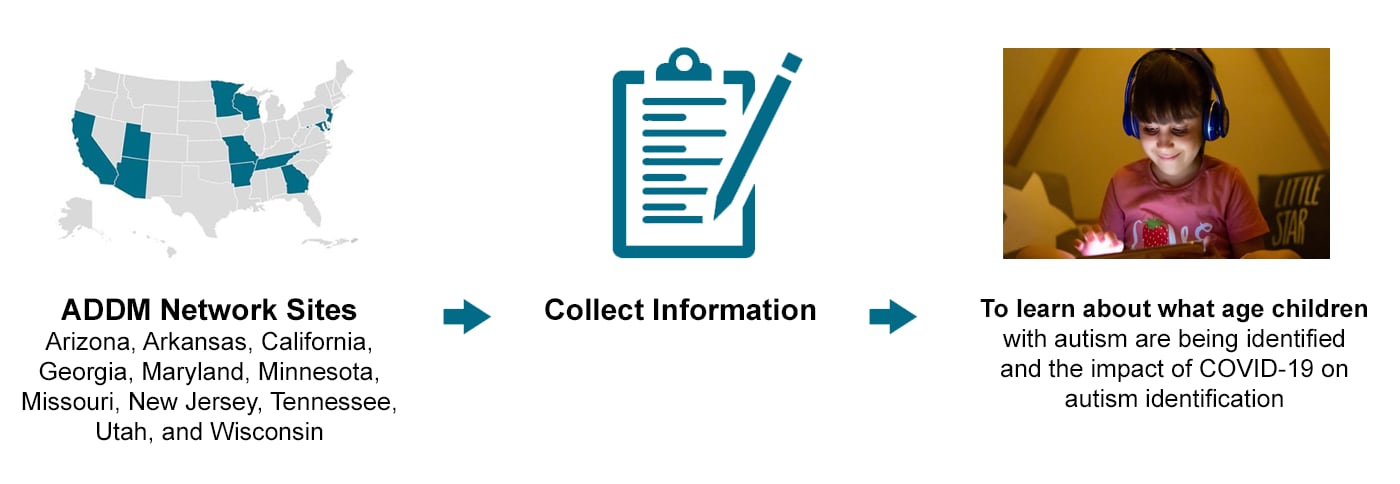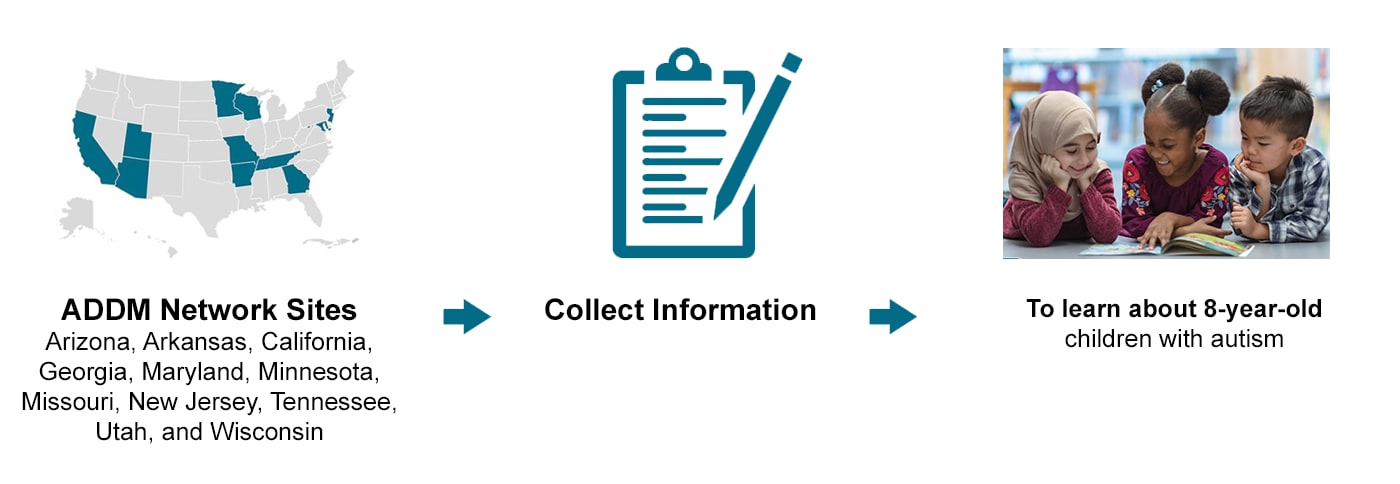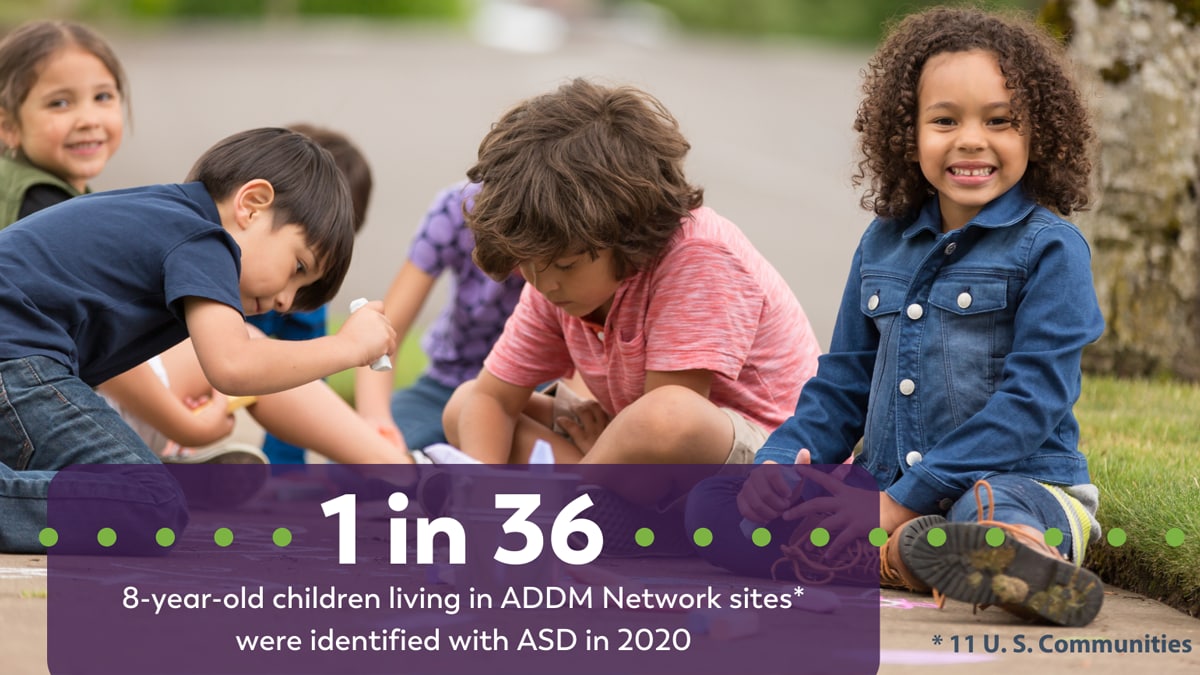At a glance
This page includes an Easy-Ready Summary for two reports. The first report is about identifying autism early among 4-year-olds. The second report is on the number of 8-year-olds identified with autism.

Identifying autism early among 4-year-old children

What was this study about?
- This study is about the number of 4-year-old children who have autism in 11 different areas of the United States.
- This study also looks at what age children with autism are being identified and the impact COVID-19 has had on autism identification.

What did this study find?

- Children born in 2016 were more likely (56%) to receive an autism diagnosis by age 4 compared with children born in 2012.
Among 4-year-old children in the 11 ADDM areas in 2020
- After COVID-19 started, fewer children were evaluated for or identified with autism.
- For every one girl identified with autism, three boys were identified with autism.
- More Black, Hispanic, and Asian or Pacific Islander children were identified with autism than White children. This finding among 4-year-old children was first observed by the ADDM Network in 2018.
- About three out of every four children identified with autism had been tested by the time they were 3 years old.
Why are these findings important?
The earlier a child can be identified with autism, the sooner the child can receive services and support. These services can help the child develop important skills in childhood and as they become teens and adults.
The number of 8-year-old children with autism

What was this study about?
This study is about the number of 8-year-old children in 11 different areas of the United States who have autism.

What did this study find?
Among 8-year-old children living in the 11 ADDM areas in 2020
- One in every 36 children had autism. This was more than what was found in earlier studies (1 in every 44 children had autism in the previous study)
- More Black, Hispanic, and Asian or Pacific Islander children were identified with autism than White children. This is the first time the ADDM Network observed this finding among 8-year-old children.
- For every one girl identified with autism, four boys were identified with autism.
- More Black children with autism also had an intellectual disability than White and Hispanic children with autism.

Why are these findings important?
These findings will help CDC determine if autism is more common in some groups than in others. This information can also help CDC find new and better ways to support these children and their families.
FAQs
What is autism?
Autism is a developmental disability. Some people with autism have trouble communicating or understanding what other people think or feel. Other people with autism focus on or do the same thing over and over again.
What is an intellectual disability?
An intellectual disability is when a person learns more slowly and differently than most people their age. An intellectual disability can cause a person to have more trouble doing certain things such as talking, moving, or taking care of themselves than most other people their same age.
What is COVID-19?
COVID-19 is a disease caused by a virus. The virus has spread around the world and can spread between people. People with COVID-19 get sick in different ways. Learn more at https://www.cdc.gov/coronavirus/2019-ncov/easy-to-read/index.html
How does CDC study autism?
CDC helps count the number of people in certain parts of the United States who have autism. Scientists call this number "prevalence." Prevalence is a number that means "of all the children in a given area, how many are like this?"
- CDC is working to learn if some children are more likely to have autism than other children.
- CDC is working to understand if some children are identified with autism sooner than others.
- CDC is working to understand if there are things that might put a child at risk for having autism.
- CDC is working to teach people, including parents and those who work in doctors' offices and schools, what autism looks like, so that children with autism are identified and helped as early as possible.
Where did the information for the studies described in this Easy-Read summary come from?
The information for these studies came from CDC's Autism and Developmental Disabilities Monitoring Network, or ADDM (pronounced like the name Adam).
- ADDM collects information about the number of 4-year-old and 8-year-old children with autism in the United States.
- ADDM collects this information from 11 different areas in the United States.
The information from ADDM helps CDC to:
- Learn if autism is more common in some children
- Identify changes in the number of children with autism
- Compare how common autism is in different areas of the United States
Articles included in this Easy-Read Summary
- Shaw KA, Bilder DA, McArthur D, et al. Early Identification of Autism Spectrum Disorder Among Children Aged 4 Years — Autism and Developmental Disabilities Monitoring Network, 11 Sites, United States, 2020. MMWR Surveill Summ 2023;72(No. SS-1):1–15.
- Maenner MJ, Warren Z, Williams AR, et al. Prevalence and Characteristics of Autism Spectrum Disorder Among Children Aged 8 Years—Autism and Developmental Disabilities Monitoring Network, 11 Sites, United States, 2020. MMWR Surveill Summ 2023;72(No. SS-2):1–14.
